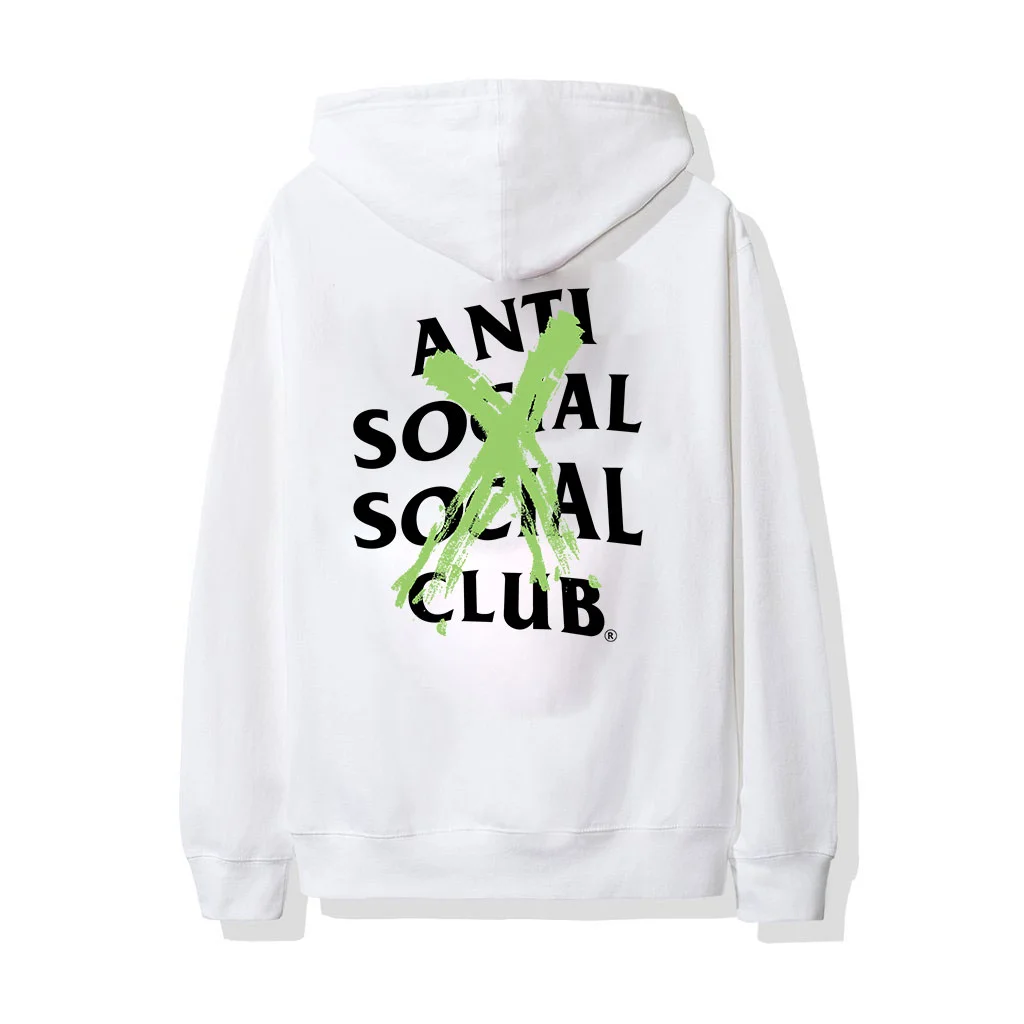Introduction to Anti-Social Club and Its Global Impact
Anti Social Club, officially known as Anti Social Social Club (ASSC), is far more than just a fashion brand. It’s a cultural movement. Since its inception in 2015, the brand has become synonymous with modern streetwear, attracting global attention for its bold typography, mysterious branding, and exclusive drops. Headquartered in Los Angeles, this enigmatic label has not only challenged conventional marketing but also redefined what it means to connect fashion with emotion.
From collaborations with global giants like Nike, Playboy, and BAPE, to its limited-edition drops that sell out within minutes, Anti Social Club has evolved into an iconic representation of Gen Z and millennial discontent, wrapped in high-end cotton.
The Origins: A Brand Born from Emotion
Founded by Neek Lurk, a former social media manager for Stüssy, Anti Social Club was initially an emotional outlet. The brand’s name wasn’t a gimmick—it was a raw, unfiltered statement reflecting Neek’s struggles with mental health, anxiety, and isolation.
This unique emotional authenticity helped the brand stand out in a saturated market. Instead of selling clothes, Anti Social Club sold feelings, frustrations, and a sense of community for those who never felt they belonged. The hoodies, t-shirts, and caps became vessels for expression—tools for people to showcase their inner battles without uttering a word.
Signature Aesthetic: Minimalist Chaos with Maximum Impact
The design philosophy of Anti Social Club is both minimalist and chaotic. Most pieces stick to a monochromatic palette—black, white, pink—but are often emblazoned with large, looping typefaces that spell out the brand’s name. The rear placement of text, quirky phrases like “Get Weird” or “Mind Games”, and unpredictable color schemes help deliver a sense of deliberate contradiction.
What makes the brand’s design language powerful is its versatility. It can be worn by skaters, rappers, fashion influencers, or everyday introverts. The branding is disruptive yet subtle—a paradox that fuels its cult status.
The Drop Culture Strategy: Scarcity Breeds Obsession
Anti Social Club mastered the art of “drop culture.” Instead of traditional seasonal collections, the brand operates on limited online releases. No restocks. No second chances. This calculated scarcity fuels hype, crashes websites, and creates immediate aftermarket demand.
Platforms like Grailed, StockX, and eBay are flooded with resellers who flip ASSC gear at marked-up prices, sometimes up to 300% above retail. The result? A powerful perception of exclusivity that few brands have managed to replicate.
Collaborations That Break the Internet
Another element behind Anti Social Club’s skyrocketing relevance is its strategic collaborations. Unlike other brands that over-collaborate, ASSC chooses partners that disrupt expectations:
-
BAPE x Anti Social Club: A fusion of Japanese streetwear precision with American rawness.
-
Playboy x ASSC: A cultural collision blending rebellion with sensuality.
-
Hello Kitty x ASSC: A contrast between youthful innocence and adult disaffection.
Each collaboration adds a layer of irony, surprise, or nostalgia, attracting diverse consumer groups and elevating the brand’s profile globally.
Celebrity Endorsement Without Trying
What sets Anti Social Club apart is its organic celebrity adoption. Unlike other labels that rely heavily on paid sponsorships, ASSC has found itself on the backs of:
-
Kanye West
-
Kim Kardashian
-
Travis Scott
-
Wiz Khalifa
-
G-Dragon
This type of endorsement happens not because ASSC pays celebrities, but because celebrities see themselves in the brand. It resonates deeply with those who navigate fame, pressure, and introspection—making it as emotionally relevant as it is aesthetically appealing.
Controversy: The Double-Edged Sword of Popularity
Anti Social Club has not been without criticism. The brand has faced backlash over:
-
Shipping delays
-
Lack of customer service
-
Unclear communication about restocks or updates
Yet, ironically, this notoriety has fed the mythos of the brand. Being anti-establishment is part of its DNA. Customers often share horror stories and triumphs alike, but that hasn’t stopped thousands from refreshing their browsers during drop days.
In fact, the controversy becomes part of the experience—an unpredictable ride that aligns with the brand’s chaotic soul.
Psychological Connection with the Youth
ASSC’s genius lies in its emotional branding. While other fashion houses focus on status, wealth, or style, Anti Social Club markets alienation, mental unease, and self-awareness. The brand speaks directly to introverts, misfits, and the anxious generation, creating an almost therapeutic connection.
Wearing ASSC isn’t just about style—it’s about saying: “Yes, I feel like that too.”
Anti Social Club and the Streetwear Economy
The global streetwear economy has exploded into a $185 billion market, and Anti Social Club remains a key player. Its ability to retain cultural relevance, despite the influx of new competitors, lies in its mystique and emotional equity.
From a business perspective, the brand’s low overhead model (no physical stores, online drops only) and hyper-loyal customer base create high margins with minimal risk. For investors and trend analysts, ASSC offers a case study in how digital-first emotional branding can reshape retail models.
The Future of Anti Social Club
Looking ahead, Anti Social Club continues to expand globally, penetrating markets in Asia, Europe, and the Middle East. While some predict saturation, others believe the brand will continue to evolve—perhaps by deepening its storytelling, introducing mental health advocacy, or embracing phygital experiences (physical + digital fashion).
Regardless of direction, one thing is clear: Anti Social Club isn’t going anywhere. It will continue to speak the language of isolation, rebellion, and realness for generations to come.
Conclusion: More Than Just a Hoodie
Anti Social Club is a mirror to the collective psyche of modern youth. It has transcended its textile origins to become an emotional symbol, a cultural revolution, and a digital-era storytelling marvel. In a world craving connection, this brand connects through disconnection—and therein lies its genius.
